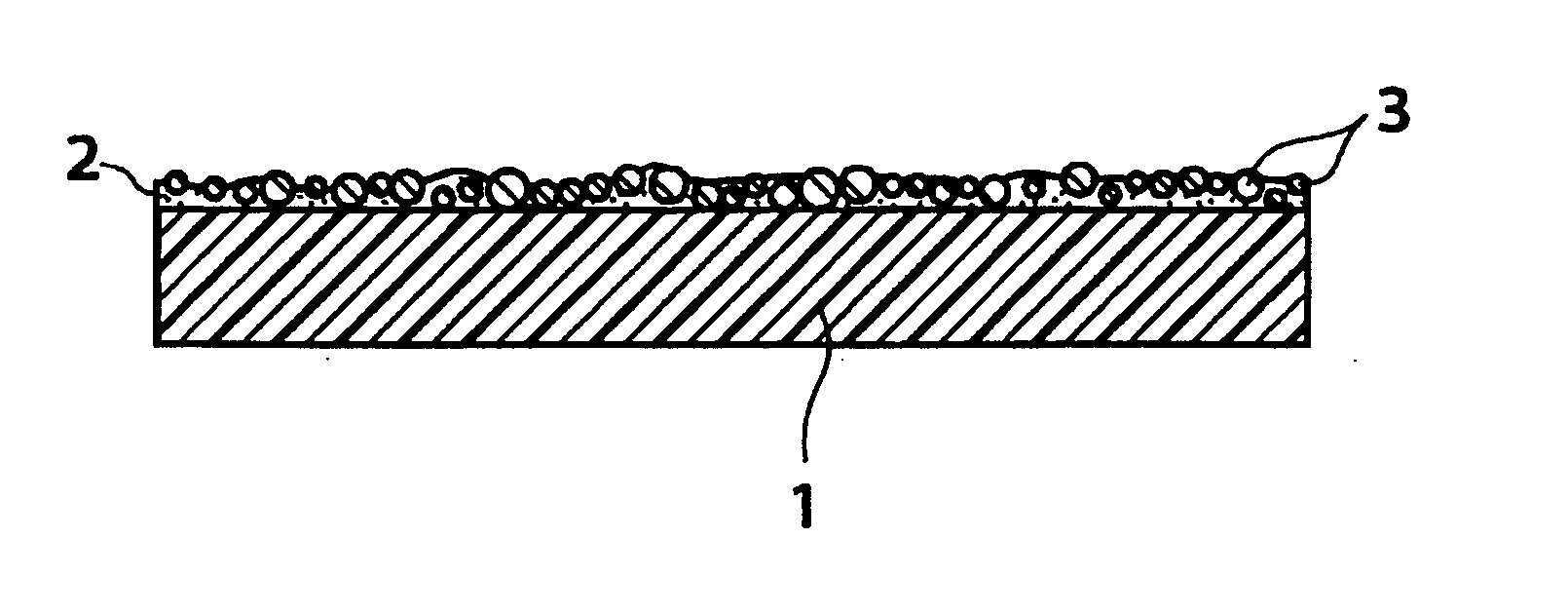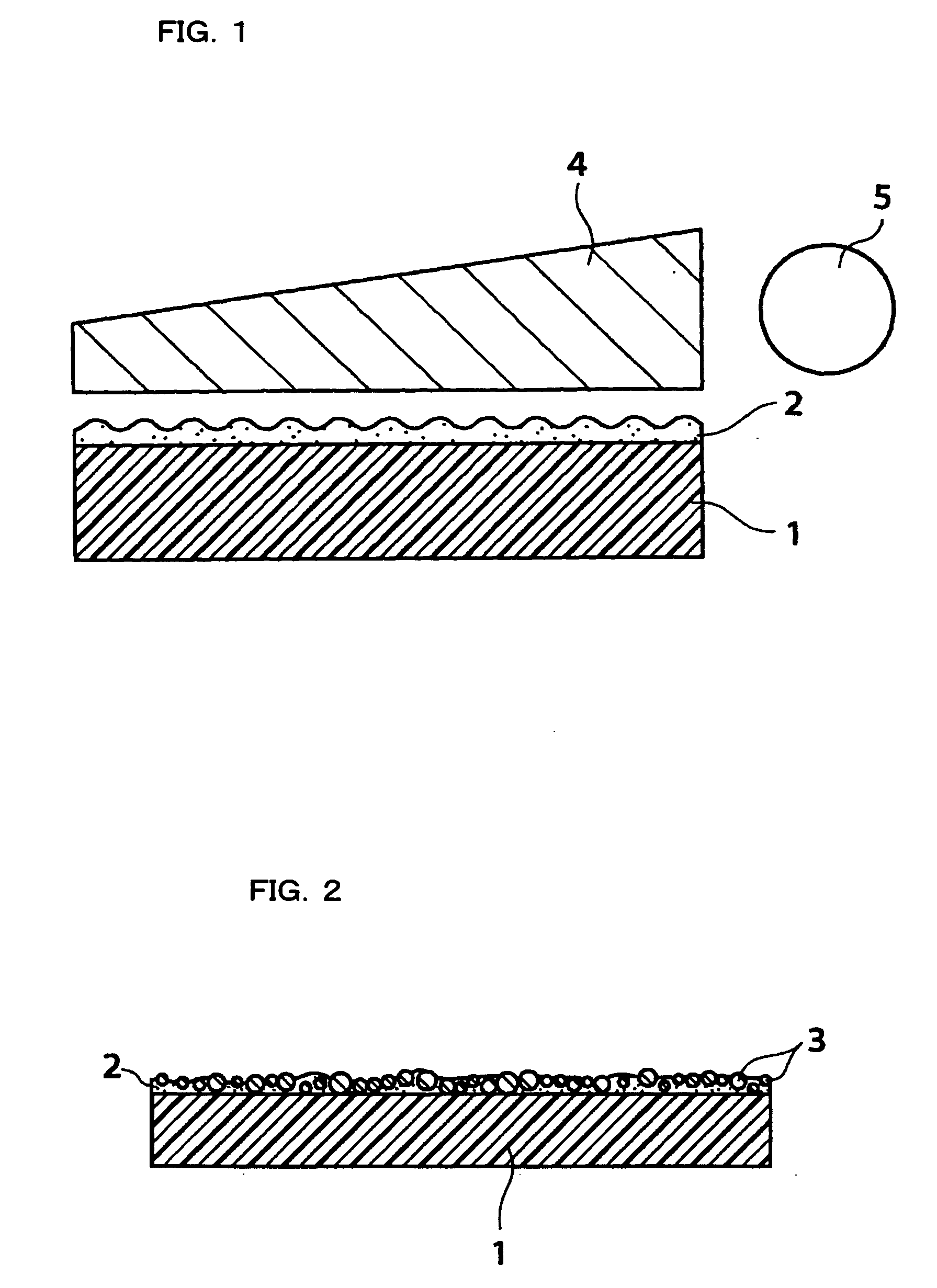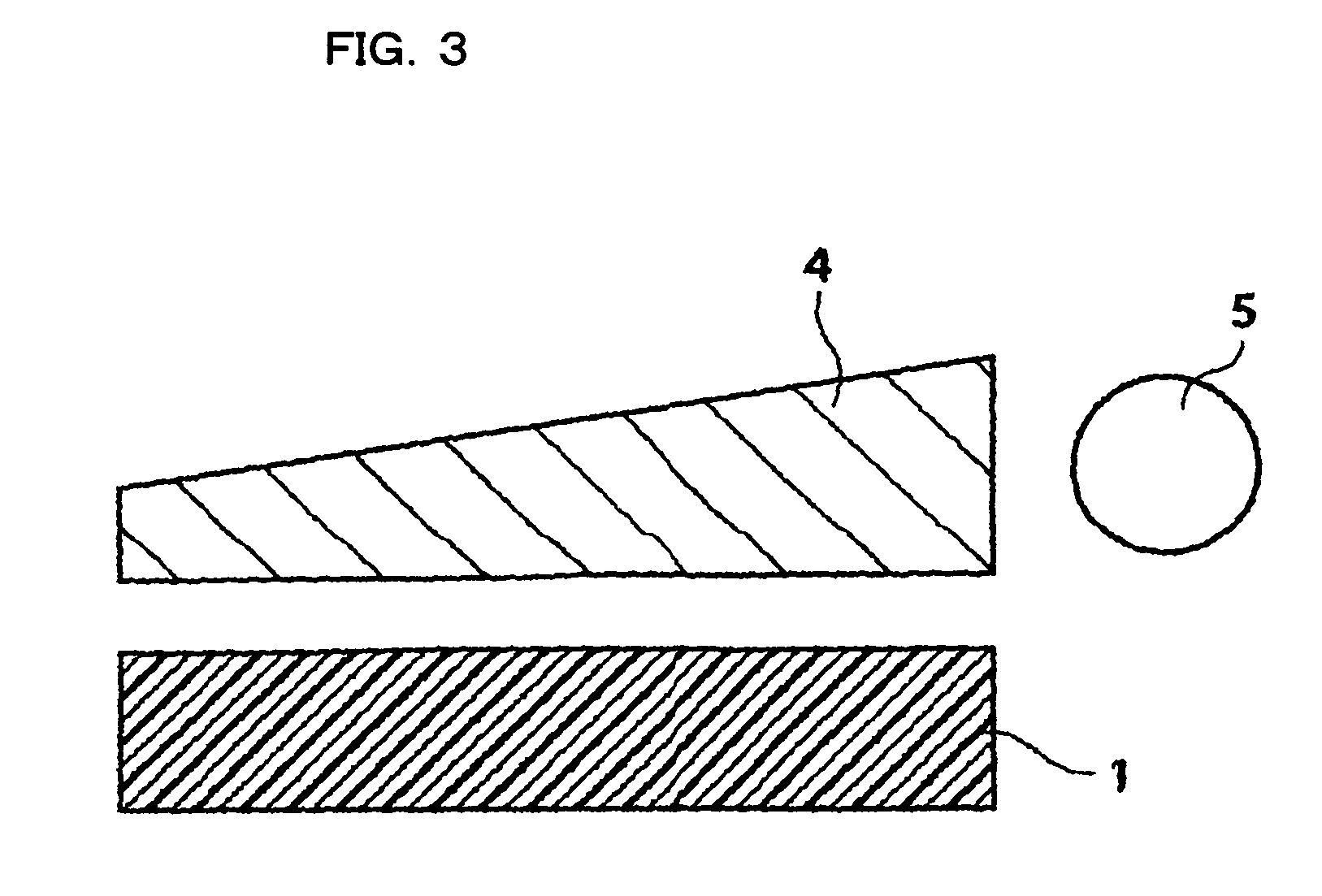Reflective film
- Summary
- Abstract
- Description
- Claims
- Application Information
AI Technical Summary
Benefits of technology
Problems solved by technology
Method used
Image
Examples
examples 1 to 6
[0029] Prepared was a white polyester film (produced by TORAY INDUSTRIES, INC, with a trade name of E60L) with a thickness of 188 μm containing calcium carbonate. Then, various kinds of elastic particles (a rubber hardness of 30) shown in Table 1 were mixed in a solvent consisting of toluene, methyl ethyl ketone and butyl acetate to form a solutions. Viscosities and the like of the solution were adjusted, and the solution was applied on the reflection surface of the polyester reflection film, and the coat thereon was dried and heat treated and subjected to aging to thereby form a resin layer containing elastic particles and obtain a reflection film. Thus obtained film was cut into a piece having a proper size and was combined with the polyolefin-based light guiding plate to form a backlight optical system.
[0030] A load of 10 kg was applied on the back surface of each of the backlight optical system over an area of the order of 5 mm in diameter. After the backlight optical system wa...
example 7
[0031] Mixed together were 100 parts by weight of acrylic-based photo-curable resin, 20 parts by weight of silicone particles (with a rubber hardness of 30) having 30 μm in average particle diameter, 5 parts by weight of a reactive diluent, 5 parts by weight of methyl ethyl ketone, 2 parts by weight of a photo initiator and 1 part by weight of a leveling agent, and the mixture was extruded through a die to form a film after transfer. Prepared were films of 50 μM and 100 μm in thickness. The films were irradiated with light and cured to obtain desired reflection films containing elastic particles. Inspection was conducted on levels of damage and light spots on the reflection films in a similar manner to that conducted in Examples 1 to 6. The level of damage on each of the light guiding plates was observed with a microscope to thereby enable a recess on the slightest scale to be recognized without any practical problem being posed, while the light spots were at a level of no recogniti...
PUM
| Property | Measurement | Unit |
|---|---|---|
| Diameter | aaaaa | aaaaa |
| Diameter | aaaaa | aaaaa |
| Diameter | aaaaa | aaaaa |
Abstract
Description
Claims
Application Information
 Login to View More
Login to View More - R&D
- Intellectual Property
- Life Sciences
- Materials
- Tech Scout
- Unparalleled Data Quality
- Higher Quality Content
- 60% Fewer Hallucinations
Browse by: Latest US Patents, China's latest patents, Technical Efficacy Thesaurus, Application Domain, Technology Topic, Popular Technical Reports.
© 2025 PatSnap. All rights reserved.Legal|Privacy policy|Modern Slavery Act Transparency Statement|Sitemap|About US| Contact US: help@patsnap.com



